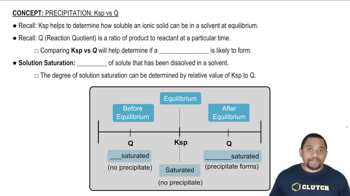Here are the essential concepts you must grasp in order to answer the question correctly.
Polarity and Hydrogen Bonding
Polarity refers to the distribution of electrical charge over the atoms in a molecule. Ethyl alcohol (CH3CH2OH) has a hydroxyl (-OH) group that is polar, allowing it to form hydrogen bonds with water molecules. This strong interaction enhances its miscibility with water. In contrast, pentyl alcohol (CH3CH2CH2CH2CH2OH) has a longer non-polar hydrocarbon chain, which reduces its overall polarity and hydrogen bonding capability with water.
Recommended video:
Hydrophobic vs. Hydrophilic Interactions
Hydrophilic substances, like ethyl alcohol, interact favorably with water due to their polar nature, leading to high solubility. Conversely, hydrophobic substances, such as the long hydrocarbon chain in pentyl alcohol, do not interact well with water, resulting in limited solubility. The balance between hydrophilic and hydrophobic characteristics determines the extent to which a substance can dissolve in water.
Recommended video:
Ksp vs Q in Precipitation
Molecular Size and Solubility
The size of a molecule significantly impacts its solubility in water. Smaller molecules, like ethyl alcohol, can easily interact with water molecules, enhancing solubility. In contrast, larger molecules, such as pentyl alcohol, have increased hydrophobic character due to their extensive non-polar regions, which limits their solubility in water. This size effect is crucial in understanding the solubility differences between these two alcohols.
Recommended video:
 Verified step by step guidance
Verified step by step guidance

